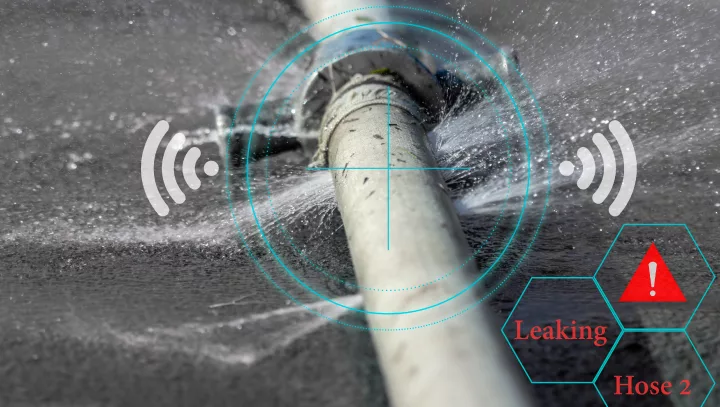Cutting-edge Solutions for Very Early Detection of Water Leakages in Structures and Facilities
As the stability of buildings and infrastructure is extremely important, the obstacle of very early detection of water leakages has actually stimulated cutting-edge options that guarantee to change the method we safeguard versus possible problems. From cutting-edge leak detection technologies to the deployment of IoT sensing units for real-time surveillance, the landscape of leak prevention is advancing rapidly. Artificial intelligence formulas provide a look right into the future of leakage forecast, while thermal imaging offers a non-intrusive method for pinpointing concealed leakages. Automated water circulation analysis systems are reshaping just how leakages are recognized and dealt with, paving the means for a positive technique to water leak detection. Each of these remedies holds the essential to ensuring the reliability and long life of our built setting, prompting a change towards a much more lasting and effective future.
Advanced Leak Detection Technologies
Advanced leak discovery modern technologies, furnished with advanced sensors and algorithms, play a crucial function in swiftly recognizing and determining water leakages in various setups. These technologies utilize a combination of acoustic, thermal, and electro-magnetic sensing approaches to find leaks properly. Acoustic sensors detect the noise of running away water, permitting precise localization of the leak resource. Thermal imaging detects temperature adjustments triggered by water leakage, giving an additional effective method for leak recognition. Electromagnetic sensing units can determine modifications in electromagnetic areas triggered by water, providing yet one more layer of leak detection ability.

IoT Sensors for Real-Time Monitoring
In the world of contemporary water leakage detection, the integration of IoT sensors for real-time tracking represents a pivotal advancement in enhancing positive leakage detection capabilities. These sensing units offer constant surveillance of water systems, providing real-time information on water flow rates, pressure variants, and temperature level changes. By leveraging IoT modern technology, these sensing units can detect also the tiniest abnormalities in water use patterns, enabling early identification of possible leakages before they intensify into major problems.
IoT sensing units transmit information to a centralized platform, where innovative algorithms assess the information and produce signals or notices when irregularities are spotted. This real-time monitoring capability allows homeowner or facility supervisors to quickly resolve leakages, minimizing water damage, minimizing repair work prices, and saving water sources.
Additionally, IoT sensors can be integrated with building monitoring systems, enabling computerized reactions to spotted leaks, such as turning off water shutoffs or activating pumps to alleviate the influence of leaks. Overall, my sources the implementation of IoT sensors for real-time monitoring considerably improves the performance and effectiveness of water leak detection in structures and facilities.
Equipment Discovering Algorithms for Leak Forecast

One trick advantage of utilizing device knowing for leak forecast is its capacity to continuously learn and improve its accuracy over time. As even more information is gathered and fed into the formula, it can refine its forecasts and adjust to changing problems, inevitably increasing the reliability of leakage detection systems.
In addition, machine knowing formulas can assist in identifying refined indicators of leakages that may go undetected by typical surveillance methods. water leak detection. By analyzing intricate information embed in real-time, these formulas can provide very early cautions and informs, enabling prompt intervention and preventive maintenance to minimize potential water damages and associated prices
Using Thermal Imaging for Leak Discovery
Thermal imaging technology provides a promising method for finding water leakages in different systems and infrastructures. By utilizing infrared radiation and temperature variances, thermal imaging video cameras can recognize surprise leaks that are not quickly visible to the naked eye. When water runs away from pipes or structures, it frequently alters the temperature of the bordering area, developing temperature level differentials that thermal cams can record. navigate to these guys These temperature abnormalities are after that converted right into visible pictures, highlighting the specific location of the leak.
Among the crucial benefits of thermal imaging for leak detection is its non-intrusive nature. Unlike typical techniques that may call for breaking into wall surfaces or floorings to find leaks, thermal imaging enables non-destructive testing. This not only saves time and lowers prices however additionally reduces interruption to the structure or infrastructure being assessed. In addition, thermal imaging can rapidly scan large areas, offering a thorough introduction of possible leakage resources in a timely way. Overall, the usage of thermal imaging technology improves the efficiency and accuracy of water leakage discovery, making it a beneficial device for keeping the honesty of structures and infrastructures.
Automated Water Circulation Evaluation Equipments
Just how can computerized water flow evaluation systems transform the discovery and monitoring of leaks in different systems and frameworks? Automated water circulation evaluation systems offer an aggressive approach to leakage discovery by continually monitoring water circulation prices and patterns. By establishing standard information, these systems can quickly recognize deviations that might suggest a leakage, enabling timely intervention to stop substantial damages.
These systems use innovative algorithms to assess real-time data and offer instant alerts when anomalies are found, enabling quick action to be taken. Furthermore, automated water circulation analysis systems can be integrated with building management systems or IoT systems, boosting total effectiveness and enabling remote tracking abilities.
Additionally, the information gathered by these systems can More Info be used for anticipating maintenance functions, aiding to recognize prospective powerlessness in the facilities before leaks occur. Overall, the execution of computerized water circulation analysis systems can substantially boost leak detection and management methods, eventually causing set you back savings, decreased water wastefulness, and boosted sustainability in structures and facilities.

Final Thought
In final thought, the integration of innovative leakage discovery technologies, IoT sensors, machine learning formulas, thermal imaging, and automatic water circulation analysis systems uses ingenious services for early discovery of water leakages in structures and facilities. These technologies allow real-time tracking, forecast of leakages, and efficient detection methods to stop water damage and waste. Implementing these services can aid in preserving the stability and sustainability of water systems in various settings.